JUN 8, 2023
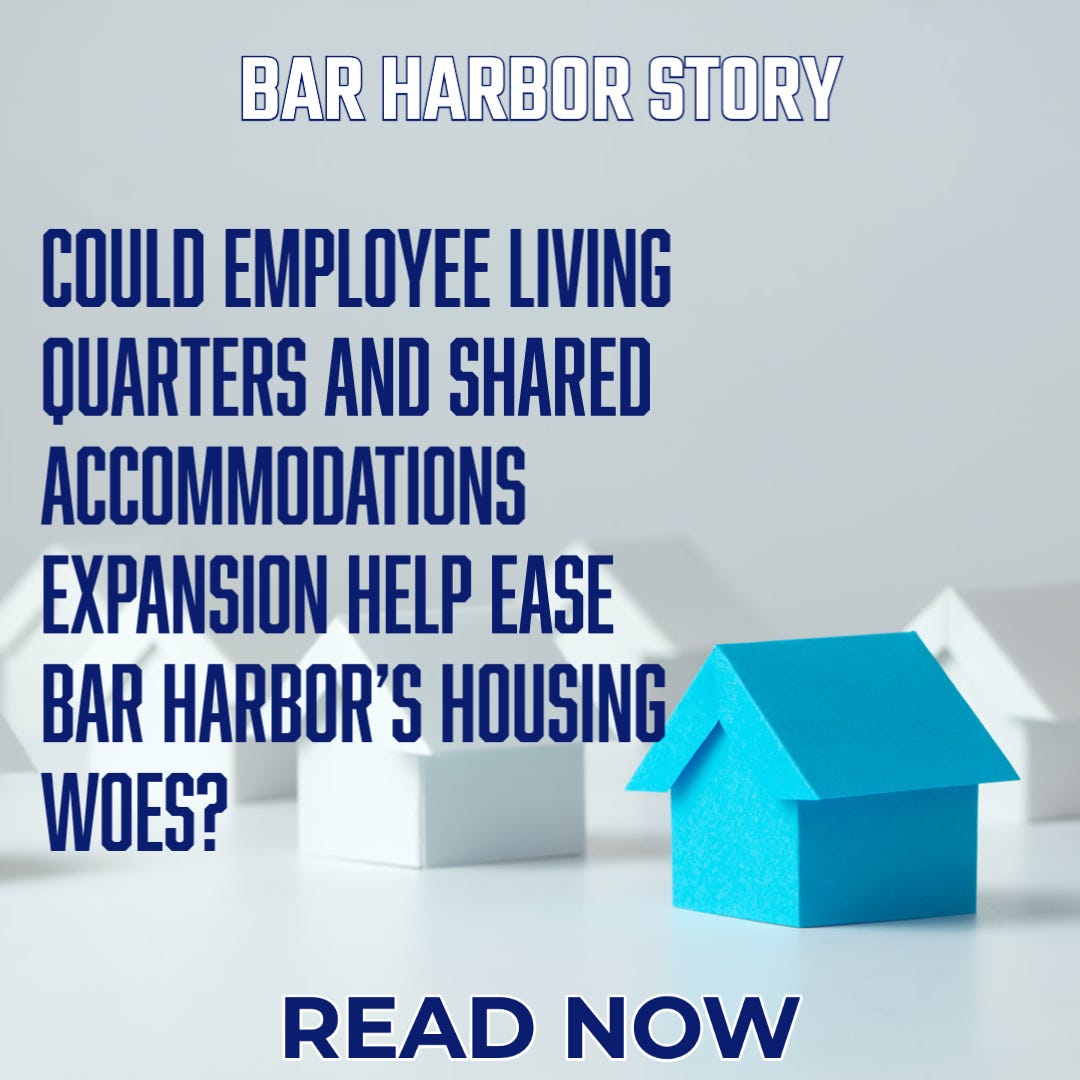
BAR HARBOR—According to studies created this year as part of the comprehensive planning process, Bar Harbor is going to need a lot of new dwellings by 2033 and it doesn’t have a lot of space to put them.
At a February 3 Planning Board meeting, Glenon Friedmann, representing Bar Harbor Farm at 115 Gilbert Farm Road in the Town Hill rural district, said that one of the farm’s biggest challenges is employee housing. The farm originally had a plan that had a few cabins for workers, but it couldn’t build the cabins and get a permit because it wasn’t an allowed use in that district. Friedmann asked that farm employee housing be added as an allowed use in the zone.
Bar Harbor Planning Director Michele Gagnon had said that the planning staff has been talking about expanding the district where that was allowed. Or a similar use could potentially be added to the Town Hill Rural district.
“Employee housing is needed for more than restaurants and downtown shops,” she said.
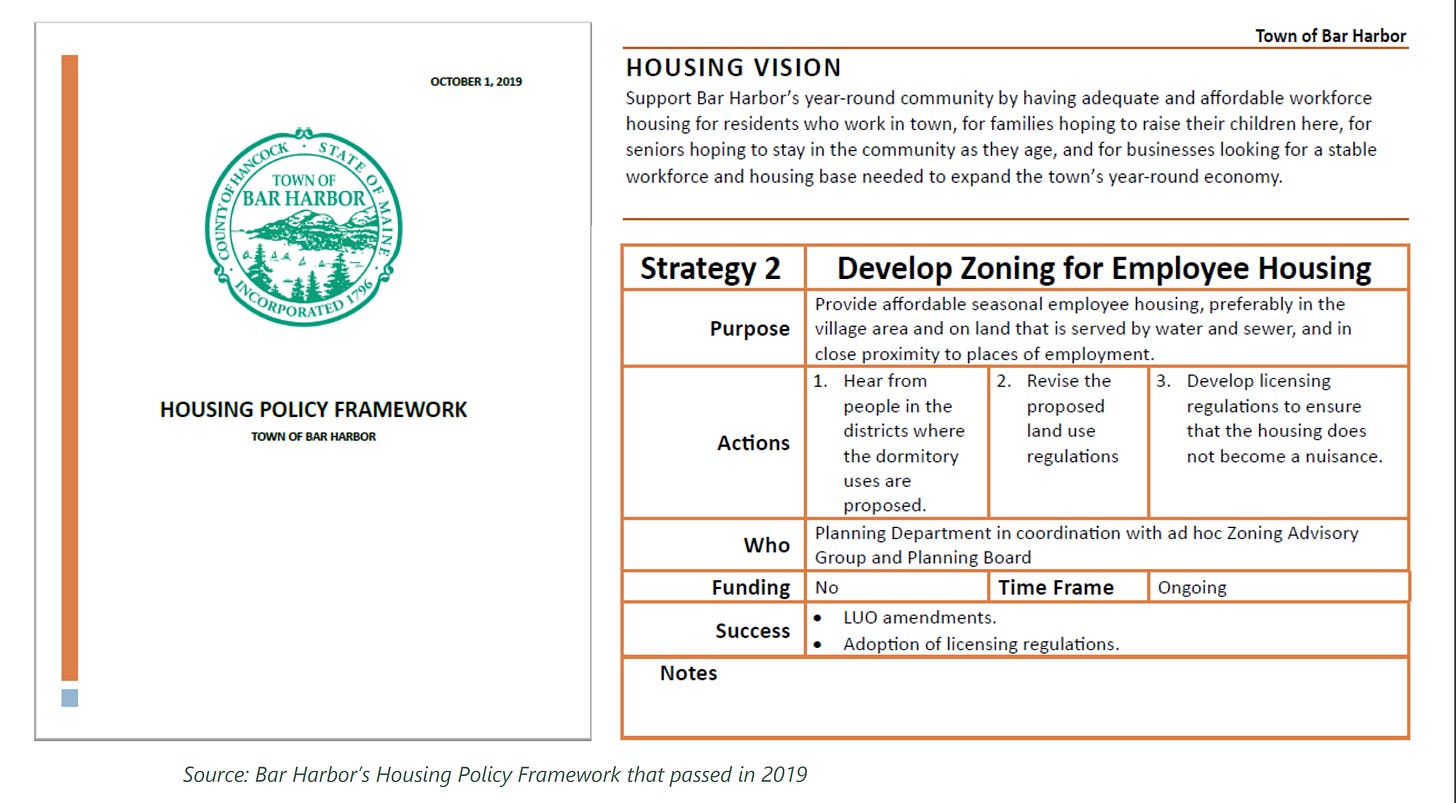
Staff Planner Cali Martinez presented the work and discussion on those potential expansions at the Planning Board meeting June 7.

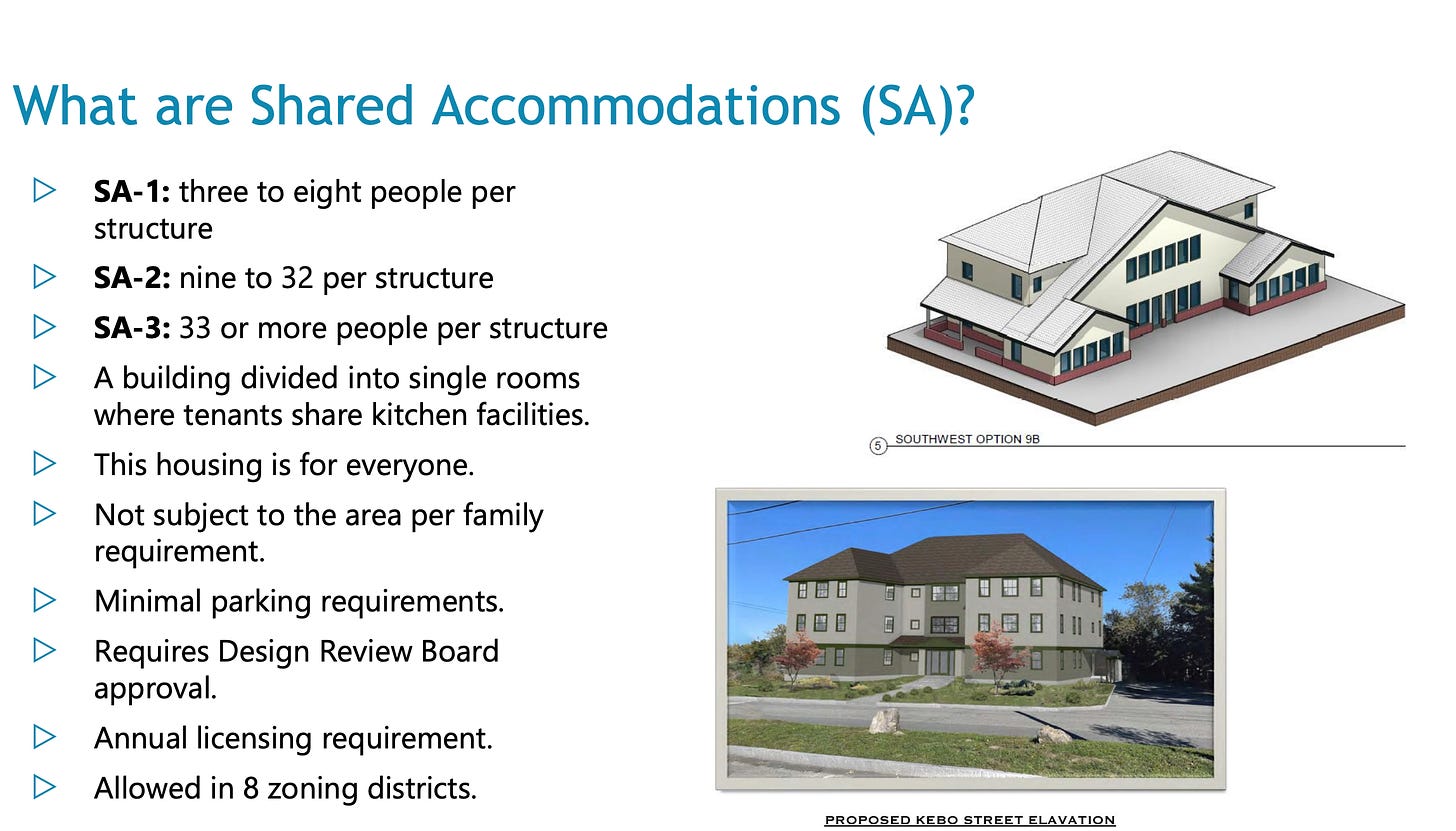
The Bar Harbor Planning Board and planning department staff began in 2019 to try to help meet the need for housing options for workers that would be more versatile than what is currently allowed in town. Employee living quarters (ELQ) and three categories of shared accommodations (SA) were created. Shared accommodations are not restricted to employees, but for everyone.
That is a really important component in all the types of housing we need to have as a balanced community, Planning Director Michele Gagnon said Wednesday.
Bar Harbor voters approved those categories in 2020. One shared accommodation and one employee living quarters are now under construction and two shared accommodation dwellings have already been built.
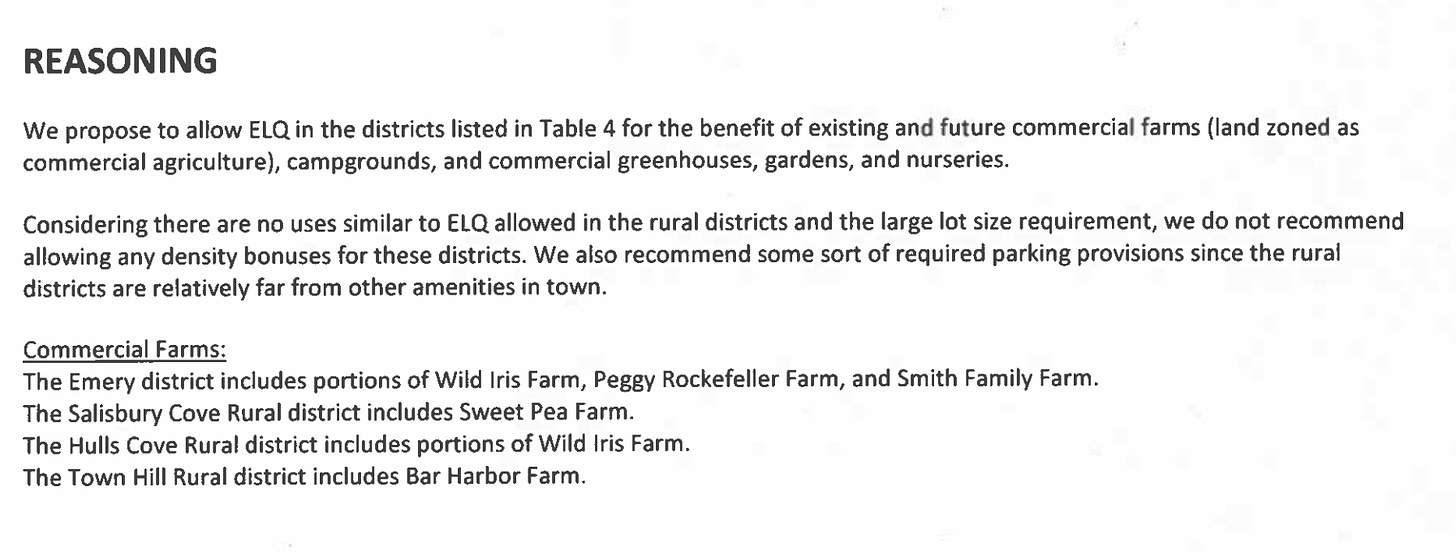
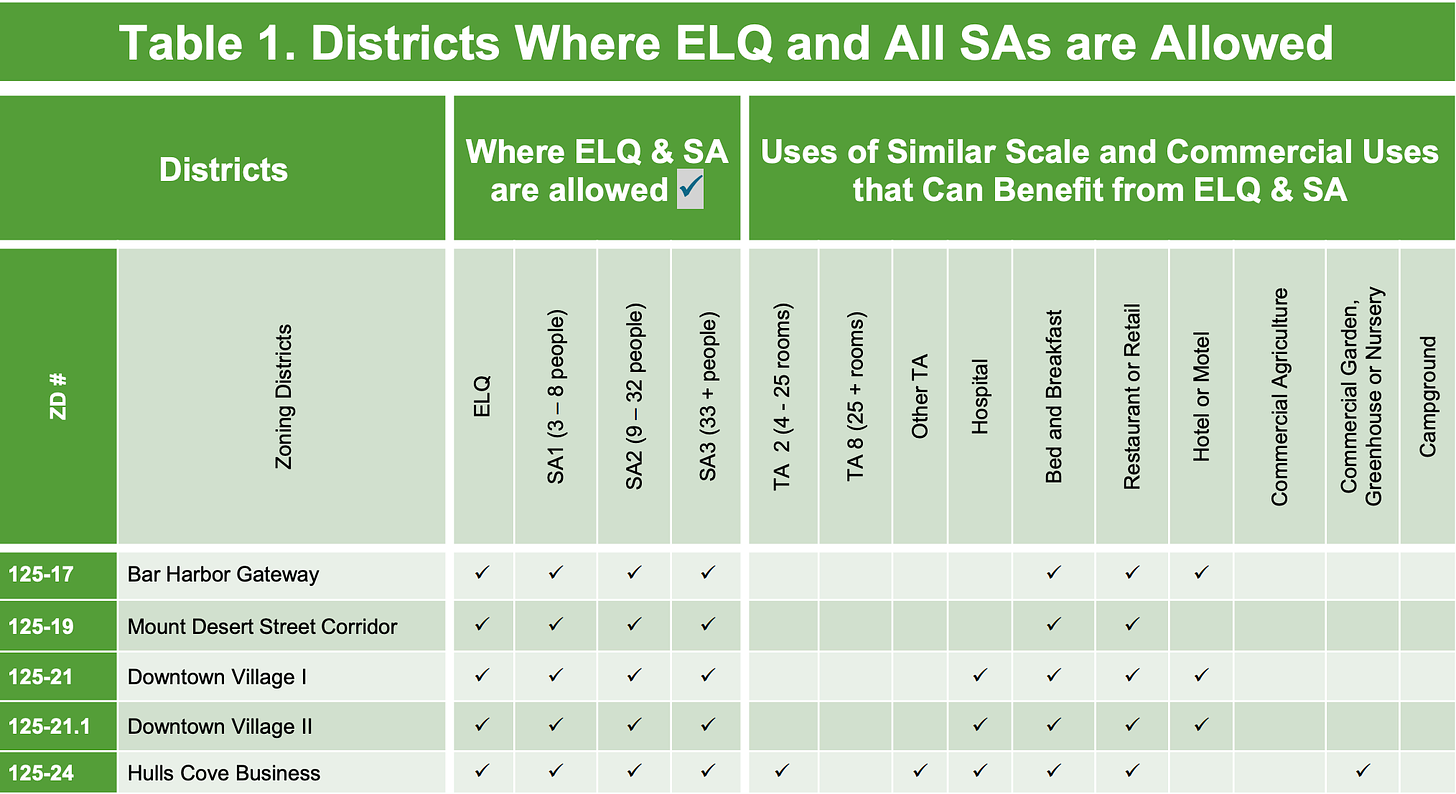
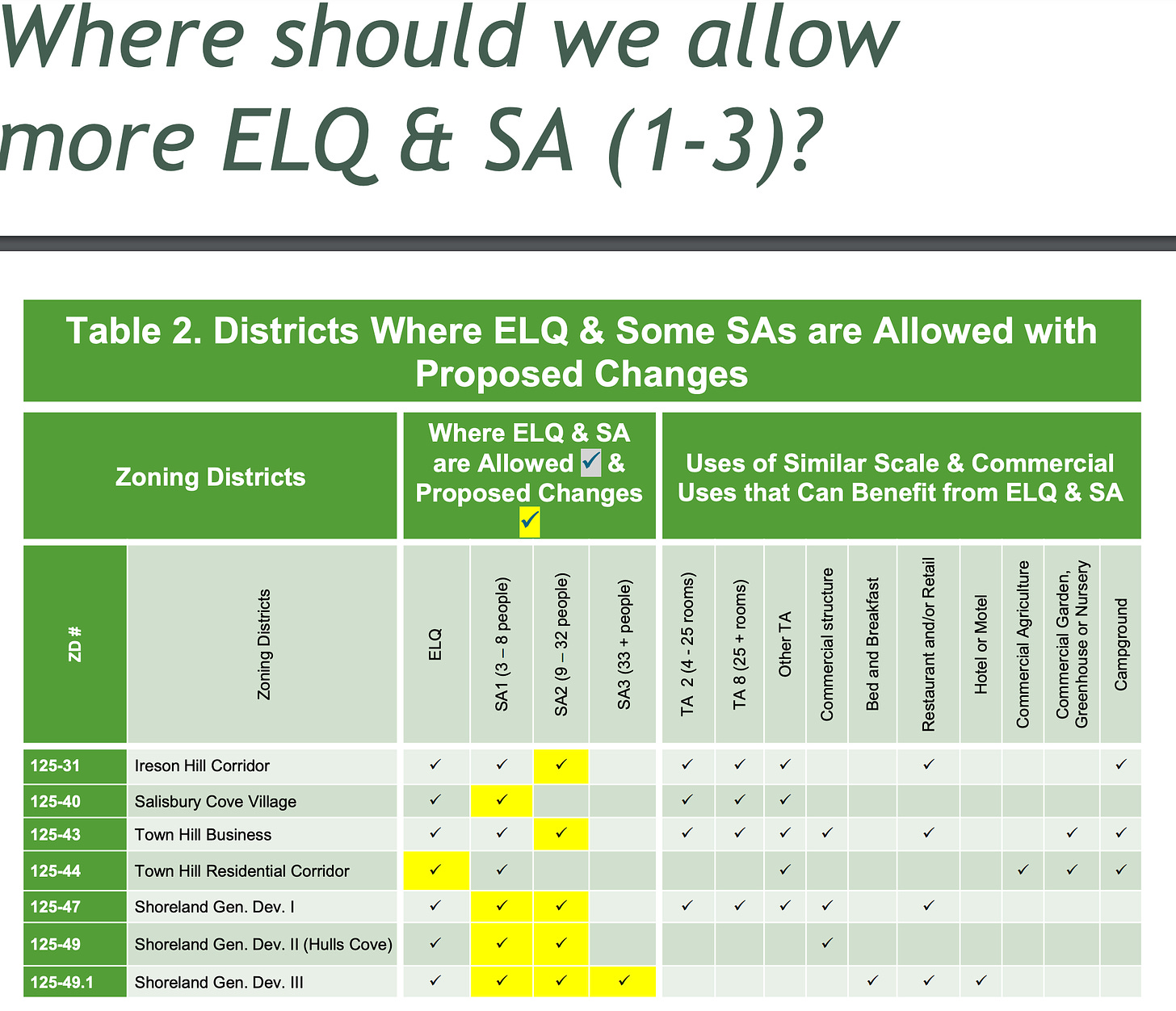
Those types of housing are not currently allowed in all 40 Bar Harbor zoning districts. There are 14 zones that allow ELQ and eight that allow SAs.
The hope is that this expansion would allow housing options that still “respect the rural and residential character of certain districts,” Martinez wrote in her presentation to Planning Board members June 7. And that it would allow farmworkers onsite housing, keep more workers local, increase business operating hours, and support businesses that are having a hard time finding workers because of a lack of affordable housing.
Planning Board member Joseph Cough said that the Planning Board had wanted to see if the program would be taken advantage of and it clearly had. The next logical step would be to expand it.
The Planning Board will discuss the presentation and ideas presented at its July 5 board meeting.

The town’s housing survey conducted in November of 2022 showed that of those surveyed, a majority of the employers (84 percent) said that their employees not living in Bar Harbor have difficulty finding housing that meets their needs. Of the employers responding, 76 percent said they lost an employee due to lack of housing or housing affordability in town. The survey also asked what employers believed were the barriers to housing.
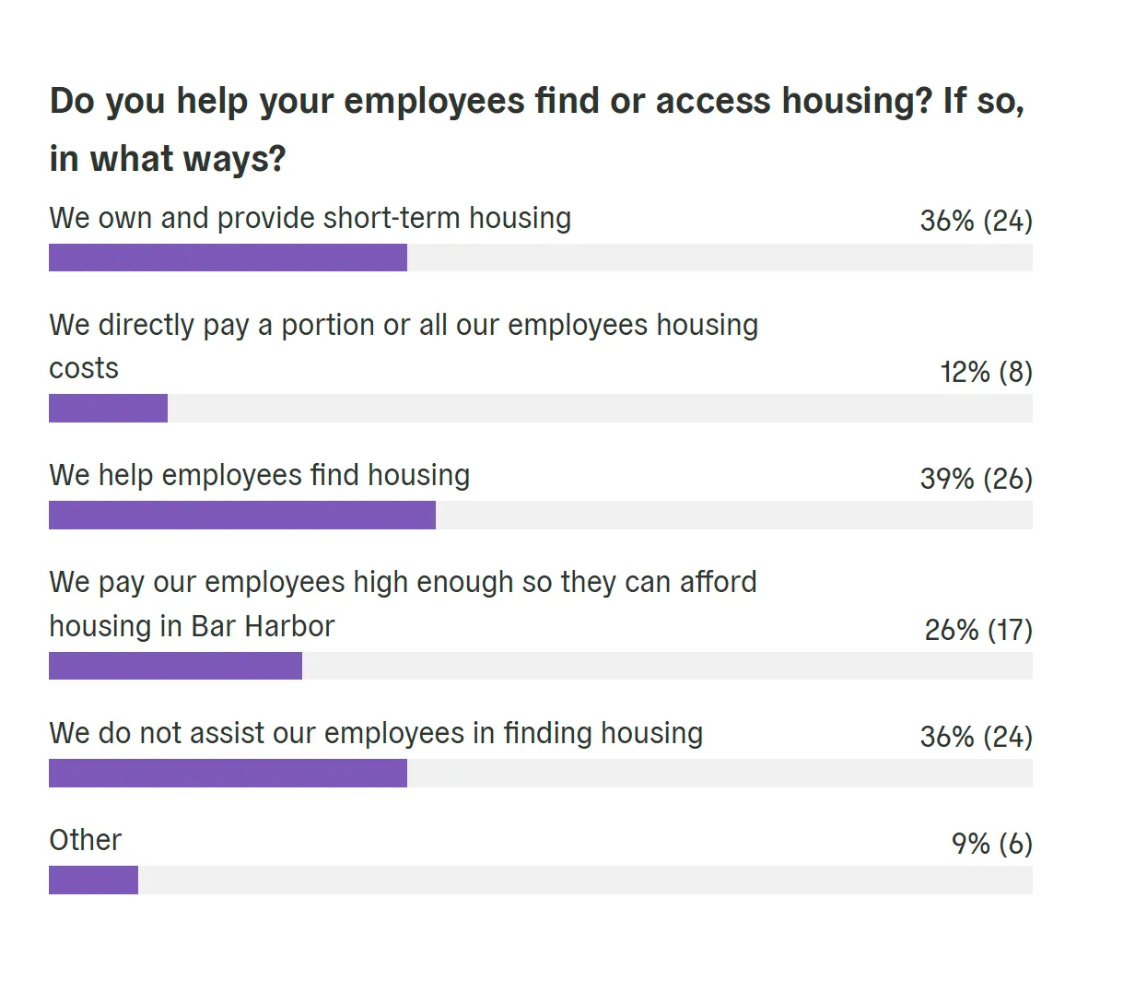
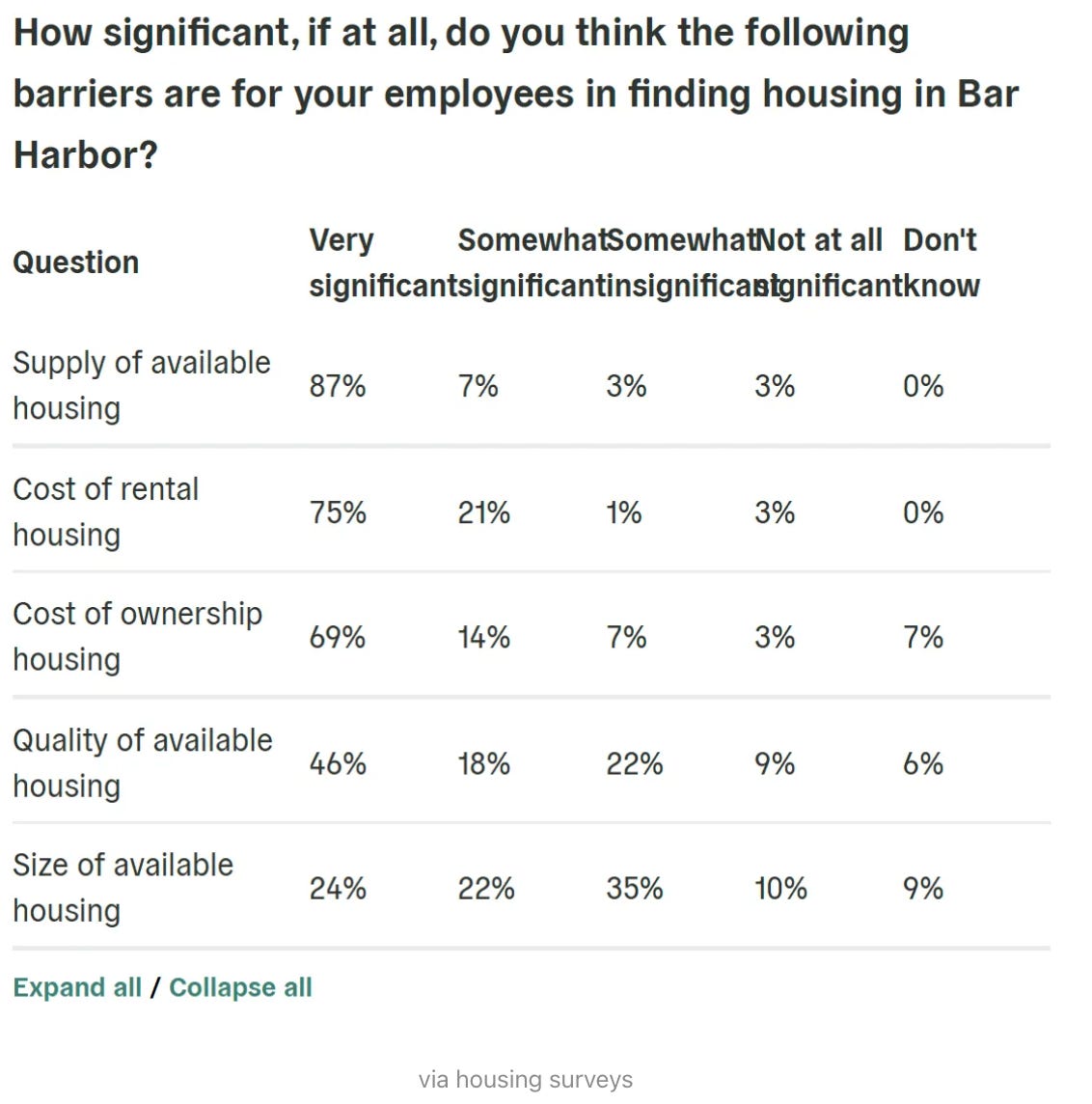
Of the 424 people who responded who live and work in Bar Harbor only 7 percent didn’t have permanent housing. About one-third lived in their current residence for less than a year
Of those who don’t find their housing meets their needs, more than half said that it was too expensive. Of the respondents to that section of the survey, 39 percent paid less than $1,000 for monthly housing including rent/mortgage, utilities, insurance, and taxes. More than 56 percent paid less than $1,500. A quarter of the respondents who live and work in Bar Harbor were under 25. The majority of respondents (in that same demographic for the survey area—68 percent) were between 25 and 64.
THE NEED AND SOME RECENT HOUSING PROJECTS ON MDI
In January, the town’s Comprehensive Planning Committee heard that the town will need between 522-616 rental units by 2033 and an additional 94 owner-occupied housing units.
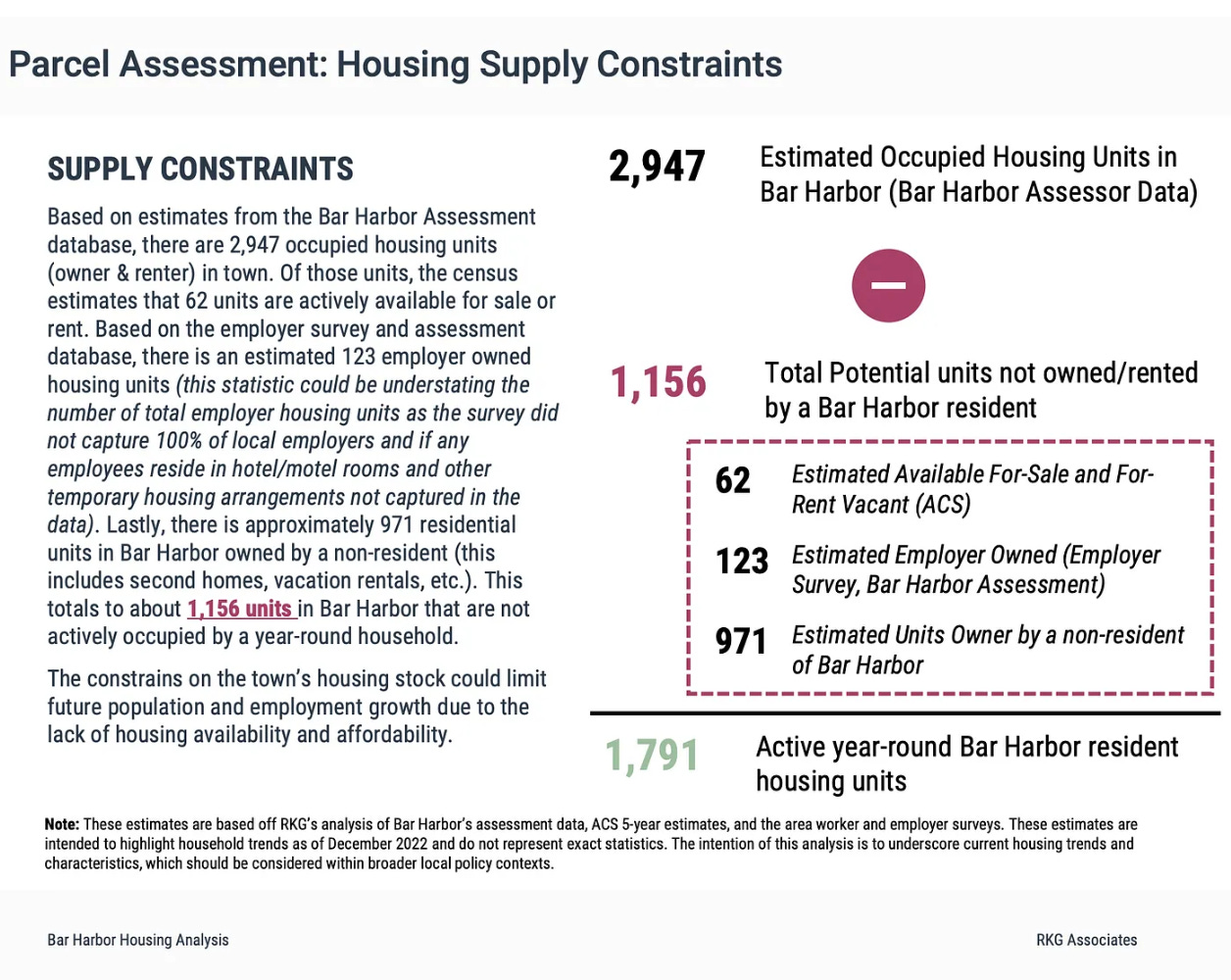
Bill Trotter has reported for the Bangor Daily News that Acadia National Park hopes to create housing for somewhere between 50 and 60 seasonal employees on Harden Farm Road, which is near the Kebo Golf course down lower Kebo Street. Another new house is being built on that road as well. The park has filled 114 of its 174 seasonal positions. Trotter reports that the park hopes to create housing for anywhere between 125 and 150 seasonal employees and hopes to work with the Island Housing Trust and Bar Harbor to also create housing on park-owned land on the Crooked Road. Earlier this year Friends of Acadia purchased and converted the Kingsleigh Inn for park employees as reported by Lincoln Millstein of the Quietside Journal, working with a credo of “do no harm” and trying not to displace year-round residents. That inn is located in Southwest Harbor.
Dick Broom of the Mount Desert Islander reported this week that Friends of Acadia is also hoping to build seasonal housing for park employees on land owned by the Rockefeller family by Stanley Brook Road. That land stores maintenance and construction materials, he wrote.
Seasonal workforce housing at the intersection of Mount Desert Street and Kebo Street was approved in December of 2023. It would house 84 people. The MDI YWCA purchased 27 acres at Hamilton Station, which it intends to use for community housing needs. The YWCA’s plans are in the early stages.
THE AFFORDABLE HOUSING SITUATION
A recent Zillow site search in Bar Harbor for available homes, apartments, and condominiums came up with 13 results. The least expensive was a 3-bedroom, 2-bath, 1,567 square foot home on Route 3. That is listed at $449,000. The most expensive is just over $11 million.

According to Redfin, a national real estate company, Bar Harbor’s median sale price was $1.3 million last month. That’s an increase of 170.8% from May 2023, however only one home sold in May 2023 according to that company’s data. That same company estimates the value of a 2,904 square foot home with three bedrooms and two bathrooms in downtown Bar Harbor to be at $1,141,424. That same home was purchased for about $525,000 in 2015. A 1,560 square foot home with three bedrooms and two bathrooms on Ledgelawn Avenue purchased for $290,000 in 2011 is now estimated on that site to be worth over $600,000.
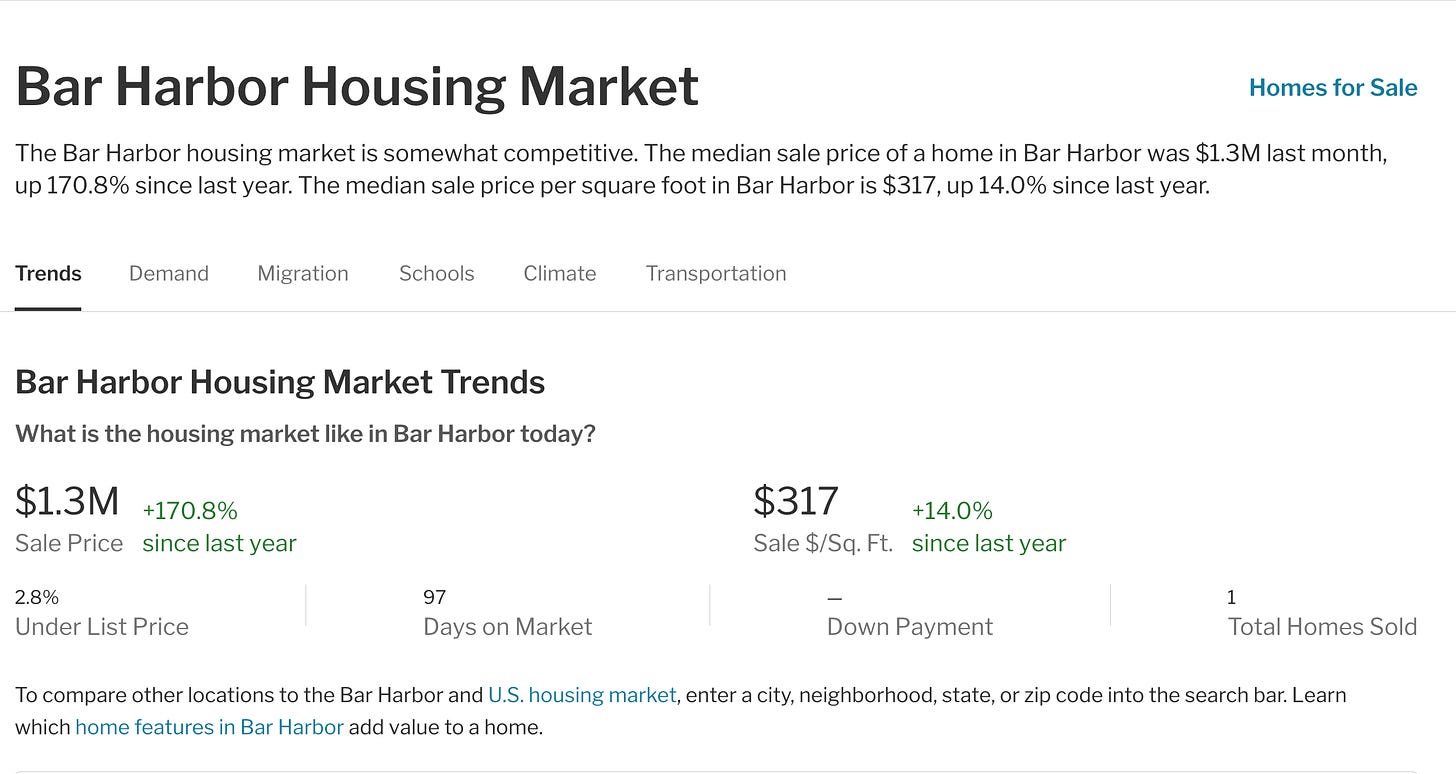
The town may be headed to a new assessment because of property value increases.
Starter homes, which are usually less expensive and smaller than a majority of homes in an area, are a person’s first purchased home. Typically, these homes help people build equity so that they can move to bigger houses. Freddie Mac defines these dwellings as homes with 1,400 square feet or less.
According to an article by Freddie Mac, “The Bureau of the Census reports that in 1980, 40% of homes constructed were entry-level homes. In 2019, only 7% of homes constructed were entry-level homes.”
The problem is nationwide and local.
“Affordable houses don’t exist anymore” when it comes to building starter homes said Linda Farnsworth Higgins who has been a realtor and broker at LS Robinson since 1987 told the Bar Harbor story in an October interview. Higgins said one reason is the cost to buy land and then to bring in septic, utilities, and putting in a well. Even a home without upgrades like granite countertops are coming in around $350,000 or $400,000 to build, she said. With currently increasing interest rates, that’s putting those homes just out of reach for a lot of buyers.
Builders aren’t incentivized to construct those starter homes because for the same amount of labor, a builder can create an above-grade dwelling with those fancier amenities and be able to pay his employees more or offer them health insurance. Similarly, a subcontractor can make more money than being a laborer for a builder and that adds to the cost to the builder, often making construction companies hustle to get enough employees to build houses. An employee wants to be paid competitively, and employers also have to pay for unemployment and Social Security, which increases the bottom line for construction companies.
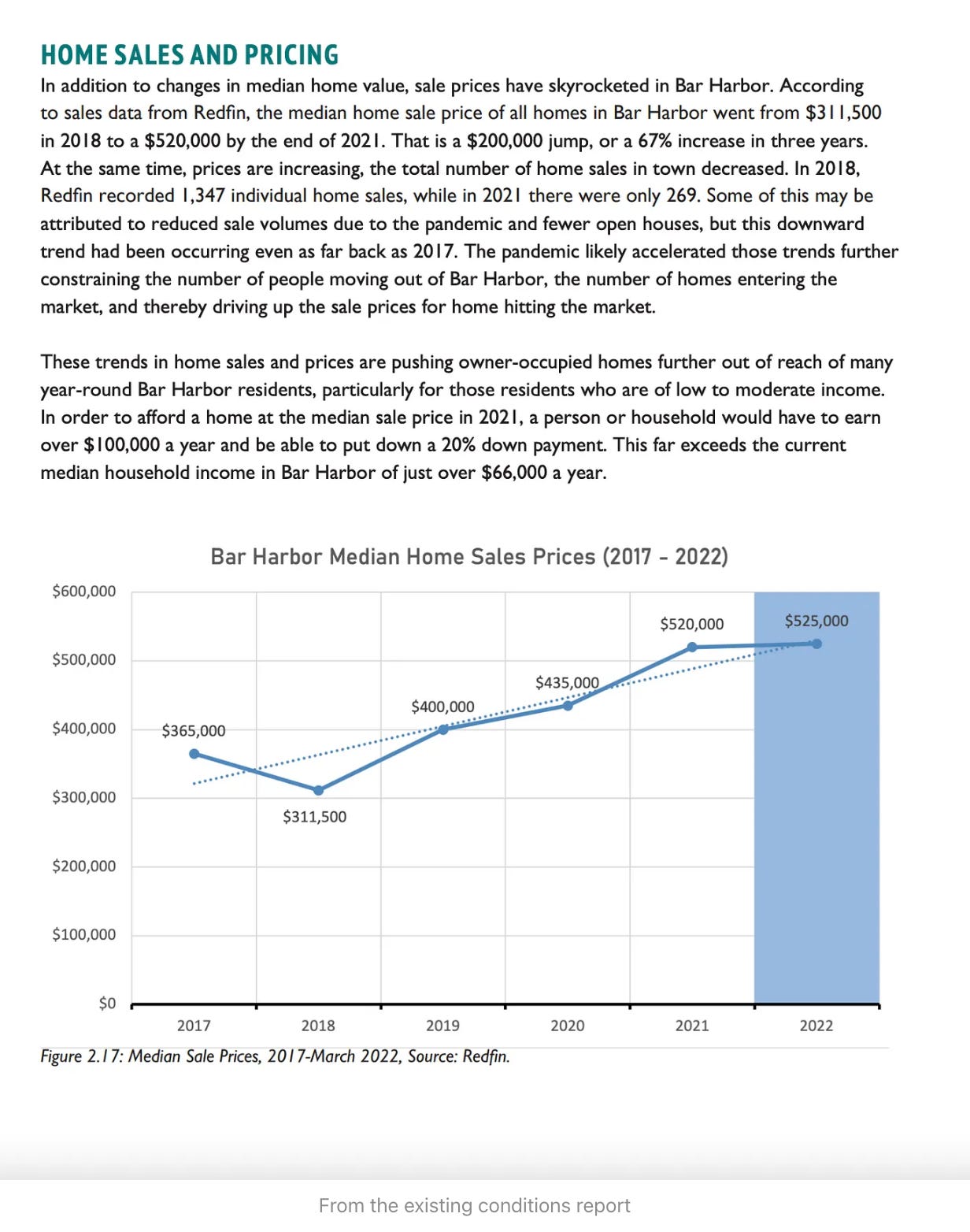
On September 25, the New York Times’ Emily Badger wrote a feature “Whatever Happened to the Starter Home?” where she said,
“The disappearance of such affordable homes is central to the American housing crisis. The nation has a deepening shortage of housing. But, more specifically, there isn’t enough of this housing: small, no-frills homes that would give a family new to the country or a young couple with student debt a foothold to build equity.”
Badger writes that multiple factors have created this housing shortage. Land costs more. Like Higgins said, the cost to build houses is more expensive because of building materials and labor costs. There are a lot more regulations and fees from governments.
As land and lots became more expensive, she writes, instead of decreasing required lot sizes to build on, towns and cities increased the minimum lot size. They also often created stricter rules about setbacks and design. And those changes often stem from towns and cities trying to make their best communities, Badger says.
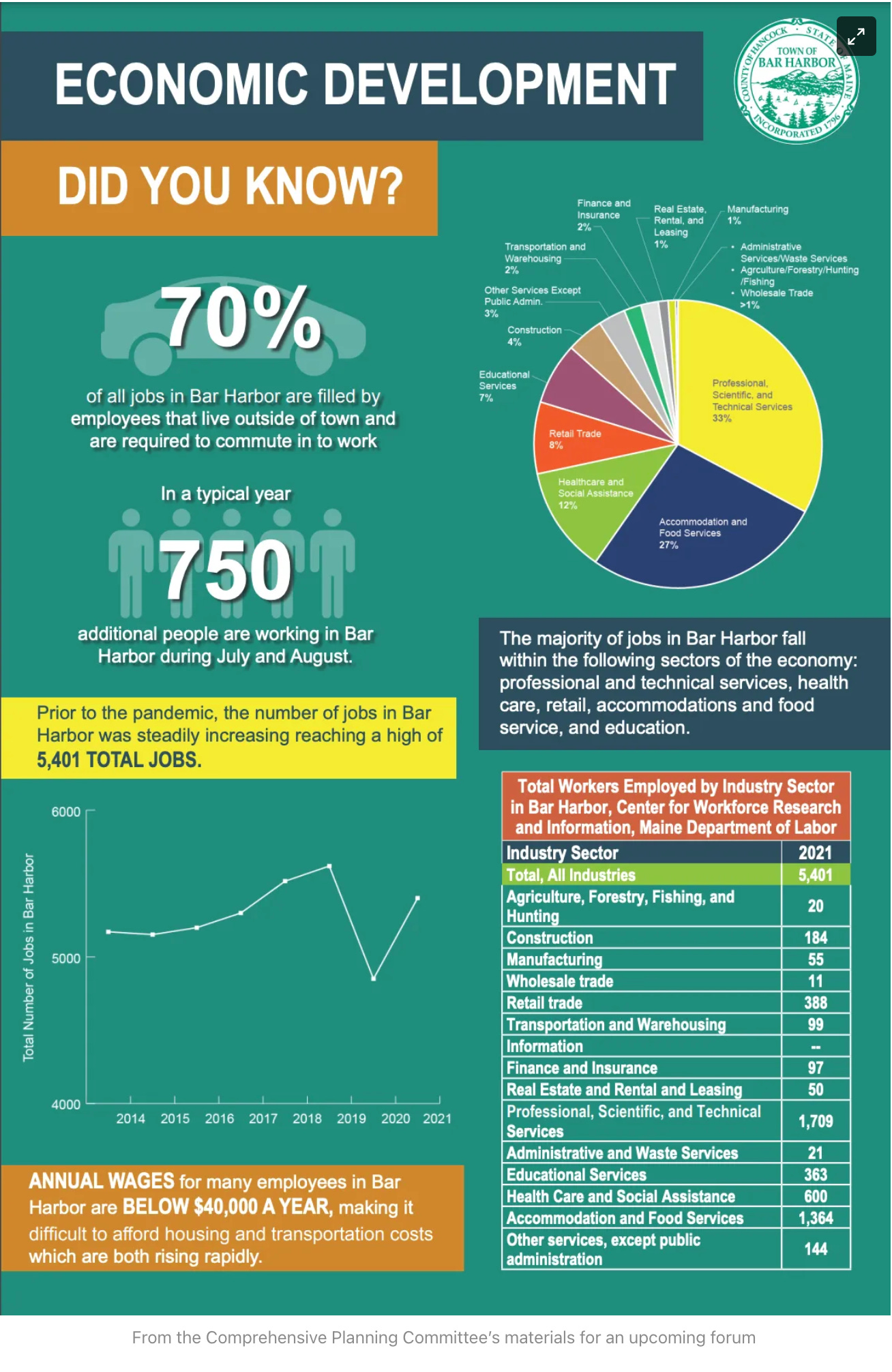
Much of Bar Harbor’s efforts have been on curtailing short-term rentals, which was the first strategy of the 2019 housing policy framework. Other strategies in the document are to develop zoning for employees, a housing needs assessment and action plan, identify zoning barriers to housing, ensure quality rental housing, reduce red tape, secure a forty-acre Town Hill parcel of National Park Service land, create partnerships with large employers in respect to housing, and create community partnerships (as well as maintain them) to address housing needs as well as focusing on low-and-moderate income housing, which is defined as “earning less than 50% to 120% of the area’s median income.”
The median household income (in 2020 dollars) for Hancock County, Maine from 2016-2020 was $58,345. There are approximately 56,192 people in the county and almost 90% have lived in the same house for more than a year.
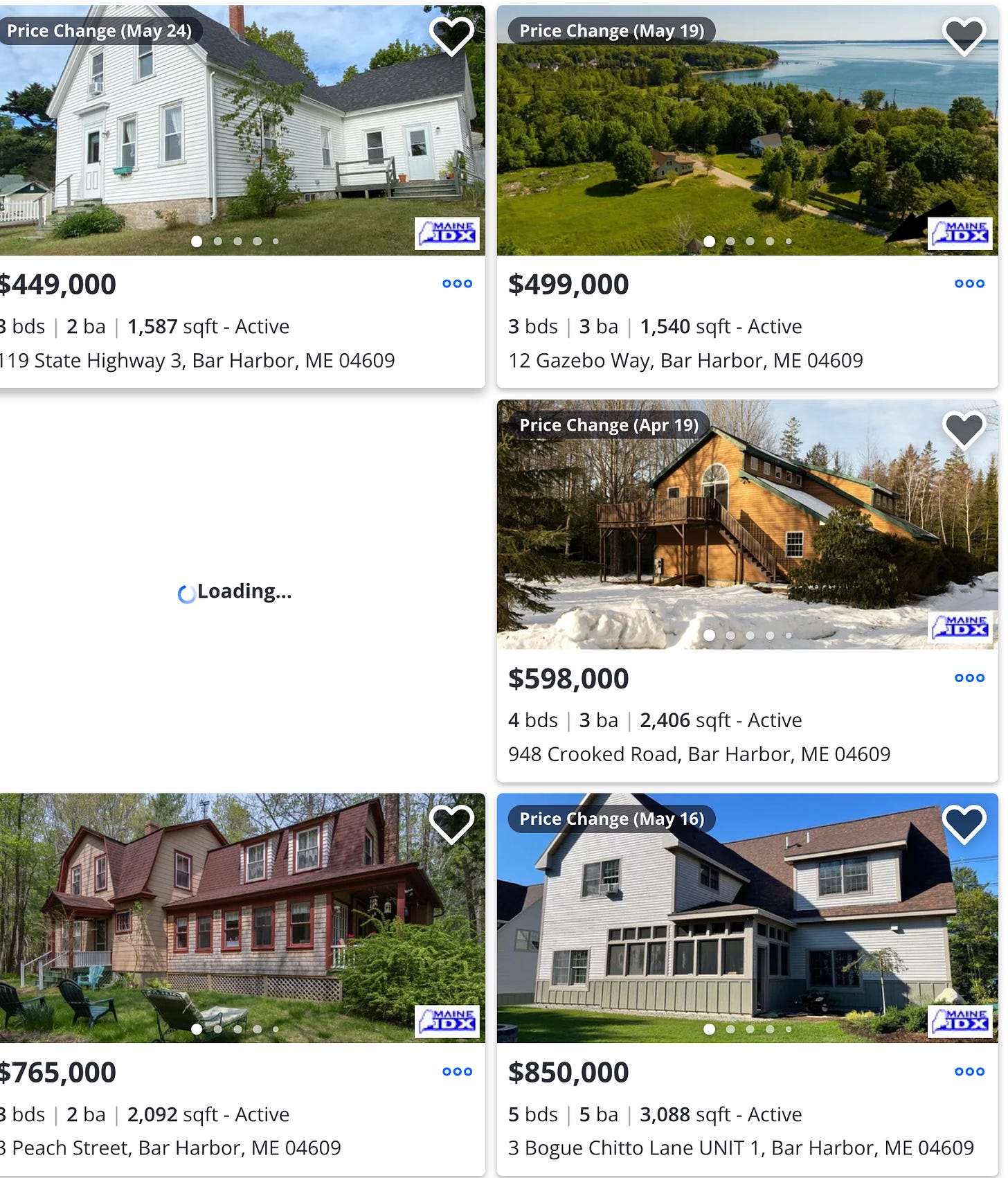
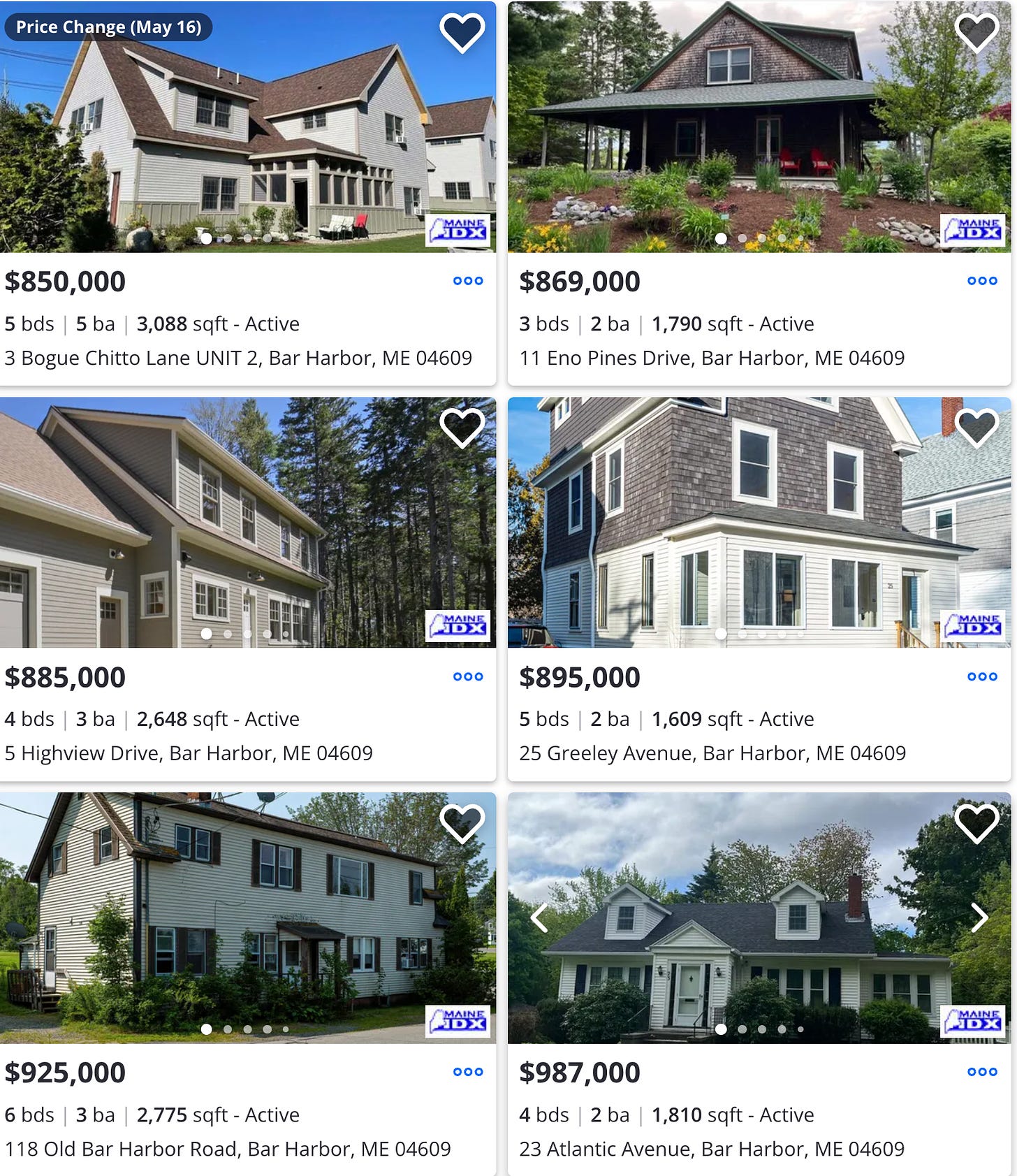
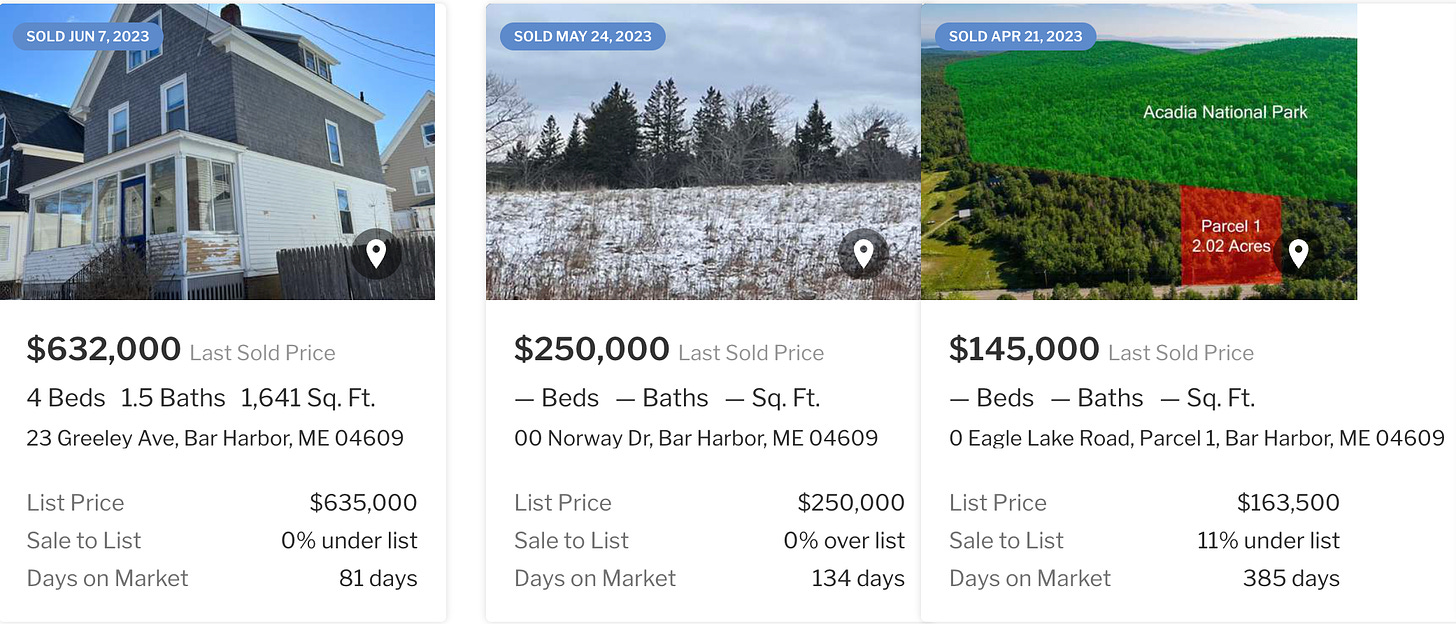
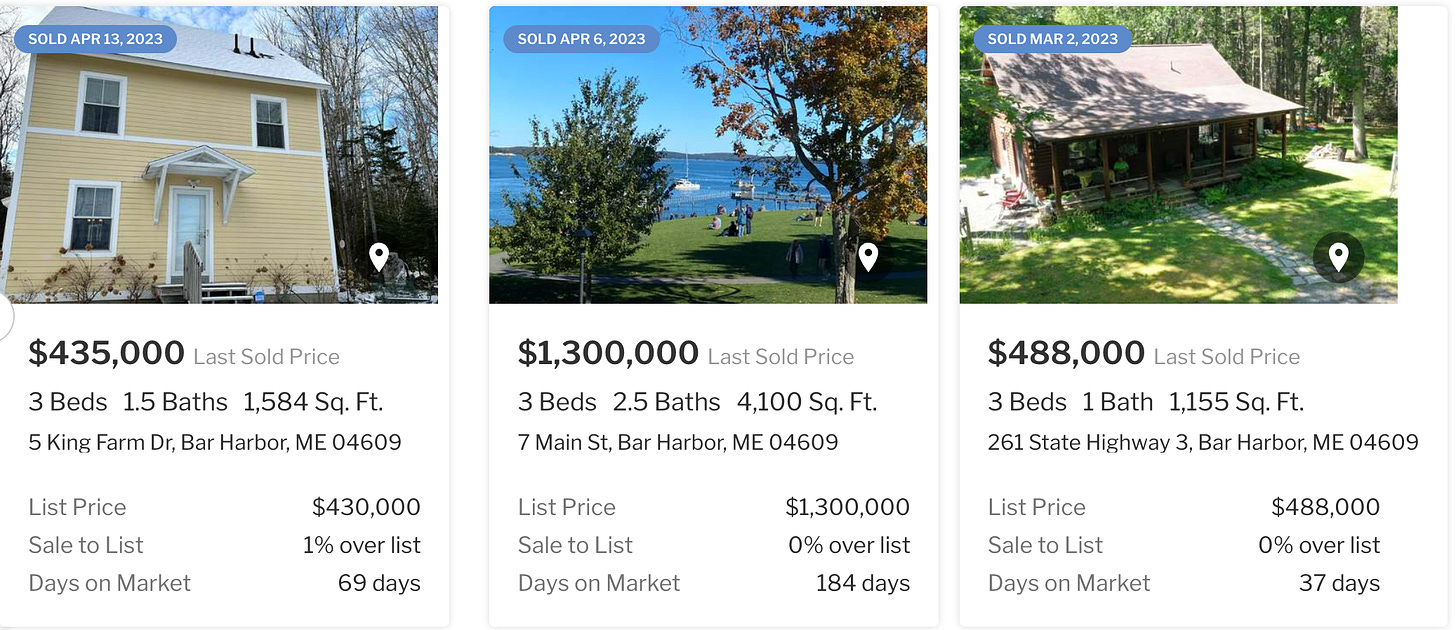
RENTALS NEEDED AS WELL.
The October 2022 Comprehensive Plan Existing Conditions Report details the housing situation in Bar Harbor with both graphs and summary. The median gross rent between 2011 and 2019 increased 9.4 percent to $894 a month. People must bring in $40,000 a year to afford a $999 monthly rent and $80,000 a year to afford a rent payment of $1,999 a month.
MDI HOUSING SUMMIT LOOKS TO HELP
On March 24, the MDI Housing Summit, an all-volunteer effort met and in May released a report. The group’s goal is to facilitate people in the community and state that are dealing with or working on the housing crisis and then “seek consensus about needs and barriers, to share information about solutions already underway, and identify strategies and champions for new solutions.” The Musson Group’s Noel Musson and Susanne Paul facilitated the summit. The Musson Group is a land use planning and economic development consulting firm based in Southwest Harbor.
In it, they said that only three of 136 MDI homes sold in 2022 were “affordable to those earning the median household income.” The median price was $646,125. The median MDI income that same year was $75,889. But the household income that people required to afford that $646,125 home was $192,905. The group’s source for that information was “Maine Housing 2022 Homeownership Housing Facts and Affordability Index for Maine.”
The group of approximately 80 attendees had key takeaways as well for needs.
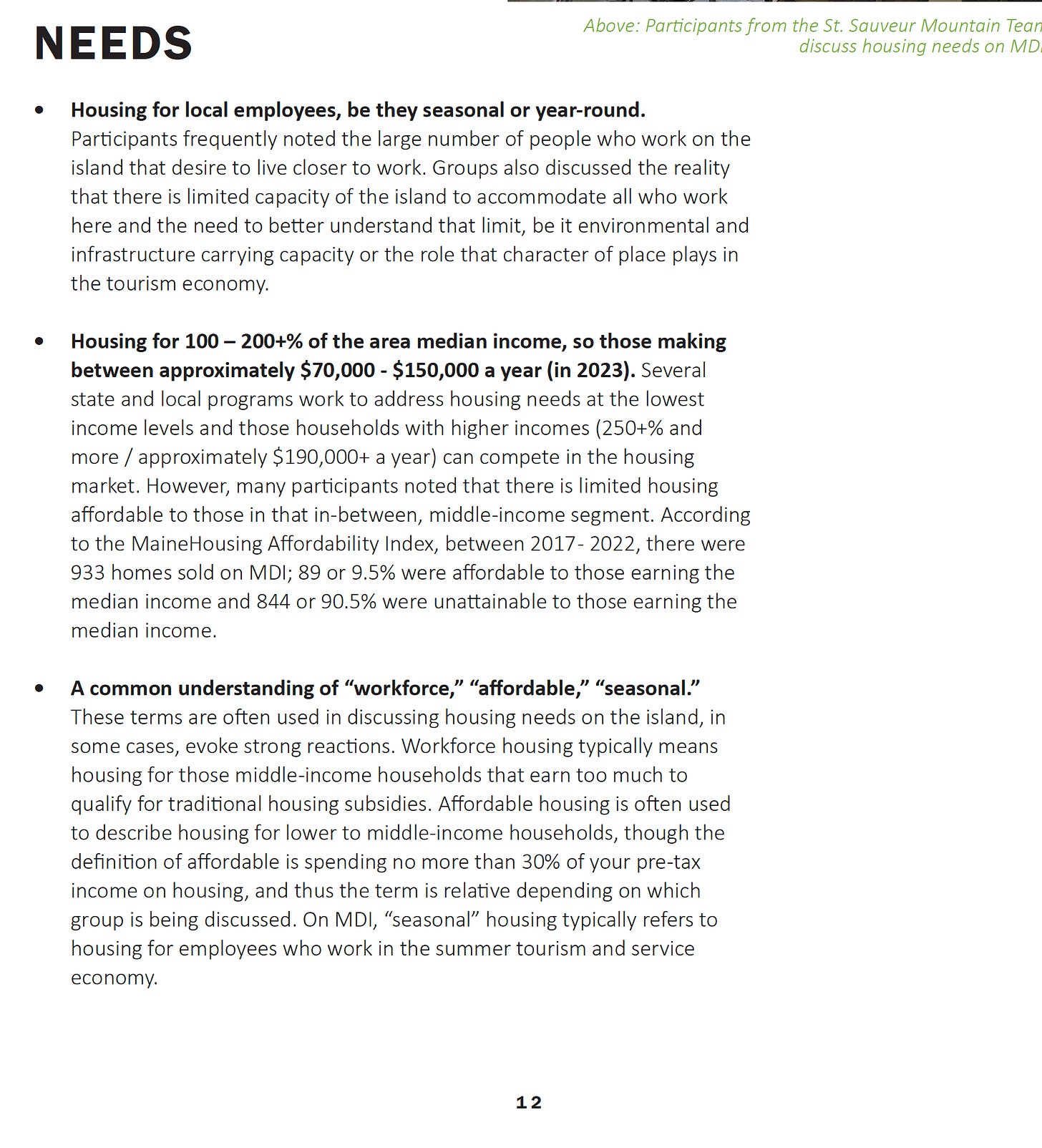
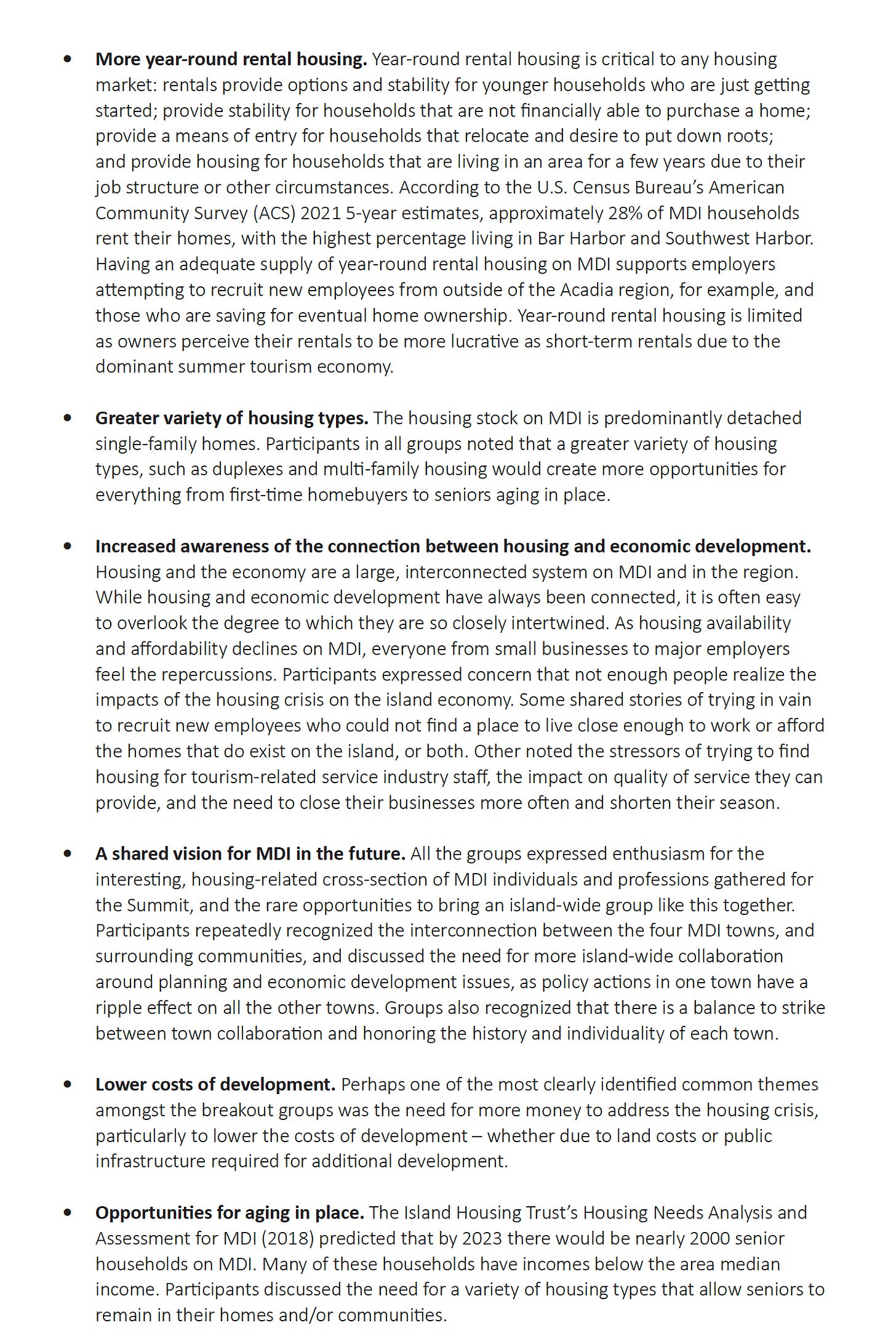
And the group also discussed barriers such as the island’s limited area that can be developed, limited water and sewer infrastructure, which is costly to construct. The seasonal tourism economy was listed as a barrier because it creates “limited career opportunities for year-round residents to change jobs within their field, increase their income over time, and keep up with rising home values. Another barrier were vacation rentals. Vacation homes, however, were not listed as a barrier though they were mentioned in the introduction and within a possible action item. Potential attitudes toward growth, zoning rules, land use regulations, and construction costs were also listed.
The summit also came up with potential solutions.
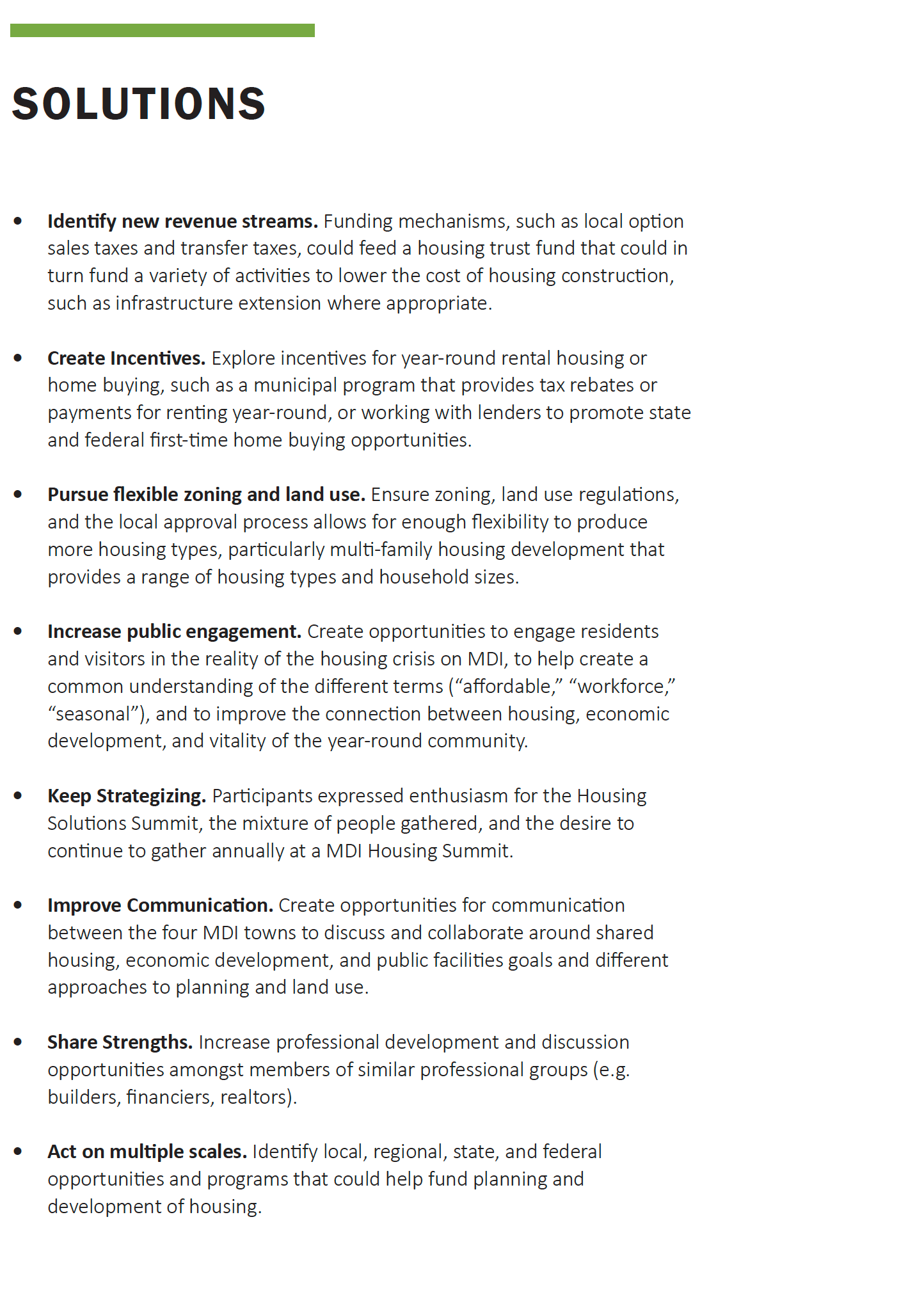
Multiple Town Council and Warrant Committee candidates have identified that a need for housing is a concern of theirs. Those candidate profiles are here and here.
A LOT OF LINKS TO LEARN MORE
You can also search “housing” under the search bar to see earlier stories. We have a lot more stories about this.
Where Have All The Starter Homes Gone?
Town’s Housing Surveys Released
Seasonal Workforce Housing on Mount Desert and Kebo Approved
It Takes a Region To Deal With Housing Issues
How Airbnb, VRBO pushed MDI to the edge, straining housing crisis; Bar Harbor responds but not other towns …The Quietside Journal
Why MDI town government efforts will not dent housing crisis; war-like mentality needed
LINK TO DEVELOPMENT STUDY (begins at page 55)
LINK TO THE 2019 BAR HARBOR HOUSING POLICY FRAMEWORK
LINK TO EARLY SEPTEMBER PB ARTICLE ABOUT THE CAMPGROUND/DORM RVS.
U.S. Census Bureau Quick Facts – Hancock County
U.S. Census Bureau Quick Facts – Bar Harbor
“How Many Starter Homes Are Being Built in Your State?”
https://www.barharbormaine.gov/503/Planning-Project-Archive
https://www.barharbormaine.gov/503/Planning-Project-Archive
Bar Harbor Story is a mostly self-supported publication. To receive new posts and support our work, consider becoming a free or paid subscriber. Thanks for being here and caring about our community.


One thought on “Could Employee Living Quarters and Shared Accommodations Expansion Help Ease Bar Harbor’s Housing Woes?”